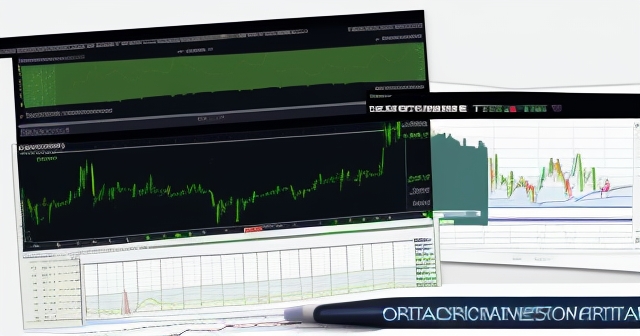The Surge in FX Options: Navigating Tariff Risks and Unpacking Volatility Dynamics
Foreign exchange, or FX, markets are often the first place where global economic shifts and political events register their impact. Recently, we’ve observed a significant phenomenon: a remarkable surge in the trading volume of FX options. Why are investors suddenly flocking to currency options? The confluence of looming political uncertainties, particularly anticipated U.S. tariff policies, and a peculiar dynamic in currency market volatility is driving this increased activity. For both novice investors exploring different asset classes and seasoned traders refining their strategies, understanding this trend offers crucial insights into managing risk and potentially capitalizing on market movements in today’s complex environment.

We’ll delve into the factors behind this boom, examine the evidence from market data, and explore the sophisticated strategies traders are employing. Our goal is to equip you with the knowledge to understand why FX options are currently “in the sun” and how they can serve as powerful tools in your trading arsenal, especially when navigating choppy, politically influenced waters.
Here are three key factors contributing to the surge in FX options trading:
- Increased political and economic uncertainty influencing currency movements.
- Lower volatility levels making options more affordable.
- A diverse range of market participants utilizing sophisticated trading strategies.
The Tariff Trigger: Anticipating Political Shocks and Portfolio Protection
At the heart of the current surge in FX options demand lies a potent catalyst: the specter of potential new tariff policies emanating from the U.S., notably associated with the potential return of the Trump administration. Geopolitical and trade tensions have a direct and often immediate impact on currency exchange rates. When countries impose tariffs on each other’s goods, it affects trade flows, the competitiveness of exports and imports, and ultimately, the relative value of their currencies.
Think of it like this: If the U.S. imposes tariffs on goods from the Eurozone, European exports to the U.S. become more expensive for American buyers. This could potentially reduce demand for European goods, leading to lower demand for the Euro currency. Conversely, European retaliation with reciprocal tariffs on U.S. goods could impact American exports and the demand for the U.S. dollar. This chain reaction creates significant uncertainty for businesses engaged in international trade and for investors holding assets denominated in these currencies.
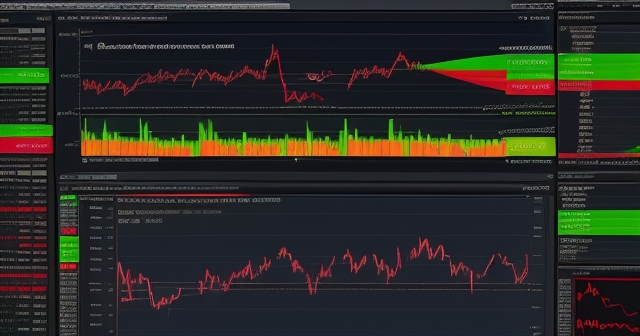
The market’s anticipation of specific actions, such as the expected reciprocal tariffs slated for April 2, acts as a tangible trigger. This date becomes a focal point around which uncertainty crystallizes. Investors and businesses don’t wait for the tariffs to hit; they attempt to position themselves beforehand to mitigate potential losses or profit from expected moves. This proactive behavior translates directly into increased activity in derivative markets like FX options, which are specifically designed to provide leverage and protection against price swings within a defined timeframe.
For you as an investor, understanding this link between political policy and currency markets is fundamental. Tariffs aren’t just trade issues; they are powerful macroeconomic forces that necessitate careful consideration in your portfolio management. FX options offer a flexible way to express a view on currency movements driven by such policies without necessarily needing to transact in the underlying currencies directly.
Volatility Dynamics: Lower Costs, Higher Appeal in a Choppy Sea
While political risk provides the ‘why’ for the demand, another crucial factor explains the ‘why now’: the state of FX market volatility. Volatility, in simple terms, is a measure of how much the price of an asset fluctuates over time. Higher volatility means bigger and faster price swings; lower volatility means more stable or slowly changing prices.
The cost of buying an option (its premium) is significantly influenced by expected future volatility, known as implied volatility. When market participants anticipate high volatility, option premiums are expensive because the probability of a large price move (which benefits option holders) is perceived to be higher. Conversely, when implied volatility is low, option premiums are cheaper.
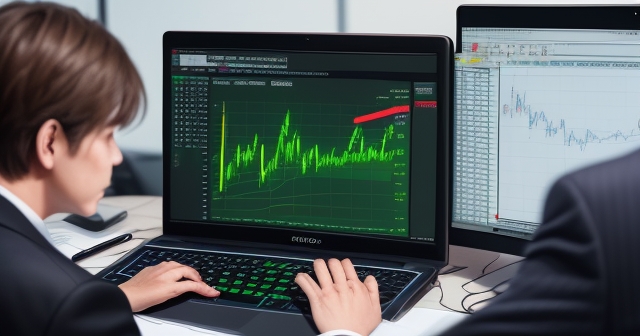
Interestingly, FX market volatility has seen a notable decrease since the start of the year. Measures like Deutsche Bank’s Currency Volatility Index (.DBCVIX) have fallen, making currency options relatively cheaper to acquire compared to recent periods. For example, implied volatility for pairs like EUR/USD had been near a two-year peak earlier but has since retreated.
This presents an attractive environment for traders. Lower option costs mean you can buy the potential for significant upside (or downside protection) at a reduced price. It’s like getting a discount on an insurance policy or a lottery ticket for a potential market move. This affordability makes FX options particularly appealing for both hedging existing exposures and speculating on directional moves driven by events like tariffs.
Furthermore, it’s valuable to contrast the FX market’s volatility landscape with other asset classes. While FX volatility has declined, other markets, such as bonds (measured by gauges like the Treasury market gyrations gauge, .MOVE) and equities (measured by the Cboe VIX, .VIX), have experienced relatively higher levels of volatility or have seen volatility increase recently. This divergence makes FX options stand out as a relatively cheaper and potentially more efficient tool for managing risk or expressing views in the current cross-asset environment.
| Market Metrics | Value |
|---|---|
| Deutsche Bank’s Currency Volatility Index | Fallen since the start of the year |
| Implied Volatility for EUR/USD | Near a two-year peak earlier |
| Cost of FX Options | Cheaper compared to recent periods |
Evidence from the Markets: The OTC Volume Explosion
The anecdotal interest and theoretical drivers are supported by concrete market data showing a verifiable explosion in FX options activity. Let’s first look at the Over-the-Counter (OTC) market. The OTC market is where financial instruments are traded directly between two parties, without the supervision of an exchange. It’s a massive, decentralized market, and its data provides a broad view of institutional activity.
According to data from Clarus, a company specializing in derivatives data analysis, the volume of OTC EUR/USD options saw a staggering increase in January 2025, rising 104% year-on-year. This single currency pair alone accounted for $852 billion in options volume in that month. Such a dramatic jump is a clear indicator of heightened interest and positioning in the market’s most traded currency pair, which is directly sensitive to U.S.-Eurozone trade policies and tariff threats.
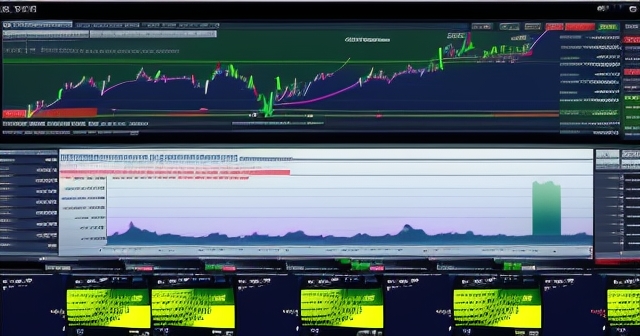
But the surge wasn’t limited to vanilla EUR/USD options. The data from Clarus also highlights a significant increase in trading volumes for more complex or “exotic” options structures within the OTC space. Digital options and barrier options, which we will discuss in more detail later, saw substantial increases. For the Euro (EUR), volume in these exotic structures more than doubled, reaching $26 billion in January 2025. The Canadian Dollar (CAD) saw an even more dramatic surge in exotic option volume, climbing over 2,000% to $7.3 billion in the same period.
These figures aren’t just abstract numbers; they represent real trades by real market participants – institutions, corporations, and sophisticated investors – positioning billions of dollars in response to perceived risks and opportunities. The sheer scale of the increase, particularly in exotic options for trade-sensitive currencies like EUR and CAD, provides compelling evidence that the market is actively bracing for potential policy impacts.
| Currency Pair | January 2025 Options Volume | Year-on-Year Increase |
|---|---|---|
| EUR/USD | $852 billion | 104% |
| Exotic Euro Options | $26 billion | More than doubled |
| Canadian Dollar Exotics | $7.3 billion | Over 2,000% |
The OTC market’s flexibility allows for highly customized option contracts, making it a preferred venue for large institutions to implement tailored hedging or speculative strategies based on specific price levels (as with barrier options) or specific outcome probabilities (as with digital options). This data confirms that the current environment is driving sophisticated activity across the global FX options landscape.
If you are interested in exploring the vast landscape of FX trading and the different instruments available beyond just spot trading, understanding the role of the OTC market is crucial. And if you are looking for platforms that can provide access to a wide range of financial instruments, including potentially more complex derivatives as your trading knowledge grows, then Moneta Markets is a worthy platform to consider. Based in Australia, it offers over 1000 financial instruments, catering to both beginners and professional traders seeking diverse opportunities.
Evidence from the Markets: Record Activity on Listed Exchanges
Complementing the data from the OTC market is the robust activity seen on regulated exchanges. CME Group, one of the world’s largest derivatives marketplaces, is a prime example. They list a wide array of FX futures and options contracts, offering standardized products, clearinghouse guarantees, and transparent pricing, which appeal to a broad range of market participants.
CME Group has reported equally compelling evidence of the FX options surge. In the same January 2025 period mentioned earlier, their FX options volume rose by a remarkable 76% year-on-year. This increase wasn’t confined to a single day or week; it represented a sustained pickup in activity, with an average of $7 billion notional value traded electronically each day.
Beyond just trading volume, another key metric indicating market positioning is open interest – the total number of outstanding contracts that have not been closed or settled. On March 5, 2025, CME Group reported a record level of open positioning in FX options, exceeding 1.2 million contracts. Record open interest suggests that market participants aren’t just executing quick trades; they are establishing positions with a longer-term view, holding contracts in anticipation of future price movements, which aligns perfectly with the idea of positioning for potential policy impacts that might unfold over weeks or months.
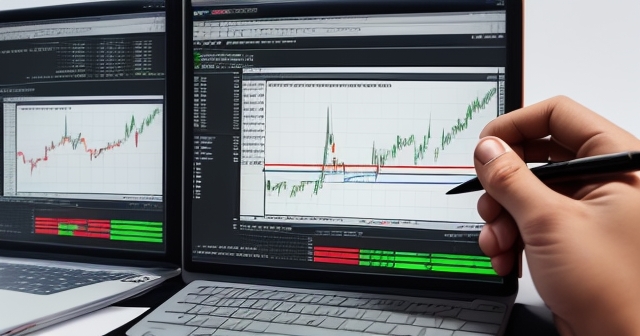
Just as in the OTC market, the increase in listed options volume on CME Group was particularly pronounced in currencies deemed sensitive to trade policies. EUR options volume on CME surged by 105%, while Canadian Dollar (CAD) options climbed by an astonishing 227% in the same period. These figures reinforce the narrative that investors are specifically targeting currencies most likely to be affected by tariff disputes.
The data from both OTC and listed markets paints a clear picture: there is a significant, measurable increase in demand for FX options, driven by strategic positioning rather than just random noise. This collective market behavior provides powerful validation for the analysis linking geopolitical risk and volatility dynamics to the appeal of currency options.
Strategic Plays: Harnessing Digital Options and Barriers
The surge in volume isn’t just about more people trading options; it’s also about *how* they are trading them. The data shows increased adoption of specific option structures tailored to the current market environment. Among these, digital options and barrier options stand out.
Let’s first look at digital options (sometimes called binary options in a simplified form, though exchange-traded digitals are more institutional). A standard call or put option gives you the right, but not the obligation, to buy or sell an asset at a certain price (the strike price) by a certain date. The payout from a standard option is linear – the more the price moves beyond the strike in your favor, the greater your profit.
A digital option is different. It has a fixed payout if the underlying asset’s price meets a specific condition (usually crossing or finishing above/below a certain level) by the option’s expiry. The payout is predetermined, say $1 per contract, regardless of how far the price moves beyond that level. Why are these gaining popularity in a tariff-uncertain environment? Because policy impacts can sometimes lead to choppy, unpredictable price action. A digital option offers a fixed payout if a key price level is breached, providing certainty in the payout amount even if the market doesn’t trend strongly afterwards. Investors use them as a portfolio buffer – buying a digital put option, for example, that pays out a fixed sum if a currency pair falls below a certain level, offering a defined amount of protection against a sharp, sudden drop.
Barrier options are another type seeing increased use. These options have a “barrier” price level. A knockout barrier option ceases to exist if the underlying asset’s price touches or crosses the barrier level. A knock-in barrier option only comes into existence if the price touches or crosses the barrier. These are useful for expressing views tied to specific price thresholds. For instance, if you believe a currency pair will stay below a certain level but want protection only if it breaks above, you might use a knockout option. They are often cheaper than standard options because the condition (hitting the barrier) reduces the scenarios under which the option is valid or pays out. This cost-effectiveness, especially when positioning for tail risks (unlikely but high-impact events), makes them appealing.
The increased volume in these specific, often more complex, option types like digitals and barriers signals that sophisticated traders are actively managing their exposure around critical price levels and potential binary outcomes that tariff decisions could precipitate. They are not simply placing bets on direction; they are using tools designed for markets where specific thresholds and event-driven movements are key.
Mastering Strategies: The Power of Options Spreads
Beyond individual option types, traders are also actively employing specific strategies involving combinations of options, known as options spreads. A spread involves buying one option and selling another option of the same type (calls or puts) on the same underlying asset, but with different strike prices or expiration dates.
Why use spreads? Spreads offer several key advantages, particularly relevant in the current uncertain climate:
- Cost Limitation: By selling an option alongside buying one, you collect premium from the sale, which offsets the cost of the purchased option. This reduces the overall premium paid for the strategy, limiting your maximum potential loss to the net premium paid. This is crucial when uncertainty is high and managing costs is paramount.
- Defined Risk and Reward: Spreads typically define both your maximum potential profit and maximum potential loss upfront. This predictability allows for better risk management and position sizing compared to simply buying a single option, where the potential profit is theoretically unlimited but the premium paid is the maximum loss.
- Targeted View: Spreads allow you to express a more nuanced view on price movement. Instead of just betting that a price will go up (buying a call), you can structure a spread that profits most if the price stays within a certain range or reaches a specific target level.
In the context of tariff threats, traders are using spreads to position for specific scenarios. For example, as mentioned in the data, traders at institutions like Citi have been noted using put options spreads on the Euro (EUR). A put spread typically involves buying a put option at a higher strike price and selling a put option at a lower strike price. This strategy is profitable if the underlying asset (EUR) falls, but it caps the profit potential below the sold put’s strike price while limiting the cost compared to buying a single put.
Why use a put spread on EUR? If traders anticipate that U.S. tariffs could cause the Euro to retreat from its current levels, a put spread allows them to profit from this expected decline. By selling a lower-strike put, they reduce the strategy’s cost, making it more affordable to place this defensive or speculative bet. This strategy is less about predicting a massive crash and more about positioning for a moderate decline or hedging against the possibility of one, all while keeping costs under control.
Using spreads demonstrates a level of sophistication in trading. It moves beyond simple directional bets to strategies focused on probability, cost-efficiency, and defined risk/reward profiles. As you advance in your trading journey, mastering options spreads is a critical step in effectively utilizing these versatile instruments, particularly in markets driven by complex factors like geopolitical policies.
Who is Driving This Activity? Diverse Participants in the FX Options Arena
It’s natural to wonder, who exactly is participating in this surge in FX options trading? The activity isn’t limited to one type of market player. The data and market observations indicate a diverse group of participants driving the volume:
- Hedge Funds: Often at the forefront of using derivatives for both speculation and hedging, hedge funds are active users of FX options to express high-conviction views on currency movements driven by macroeconomic events, such as potential tariff impacts or shifts in volatility regimes. Their activity often contributes significantly to volume and open interest.
- Asset Managers: Managing large portfolios of stocks, bonds, and other assets, asset managers are increasingly using FX options to hedge the currency risk embedded in their holdings. For example, a U.S.-based fund holding European stocks faces the risk that a decline in the Euro against the U.S. dollar could erode the value of their investment, even if the stocks themselves perform well. Buying EUR put options or using strategic spreads can help protect against this. Some asset managers might also use FX options as a way to add exposure to currency moves if they find them more attractive than other asset classes, given the relative volatility levels.
- Corporations: Multinational corporations face significant FX risk from international trade and foreign operations. While they often use forward contracts for basic hedging, they may turn to options for more flexible protection or to cap potential losses while retaining the possibility of benefiting from favorable currency movements.
- Proprietary Trading Firms: These firms trade with their own capital and are often specialists in volatility trading and complex derivatives strategies. They actively trade options, including exotics and spreads, to profit from mispricings or anticipated shifts in volatility or correlations.
- New Entrants: The attractive cost dynamics (due to lower volatility) might also be drawing new participants or encouraging existing participants to increase their FX options allocation. This could include investors who are perhaps more comfortable with equity or bond options but are seeing the relative value opportunity in FX.
| Participant Type | Role in FX Options Trading |
|---|---|
| Hedge Funds | Use derivatives for speculation and hedging |
| Asset Managers | Hedge currency risks in large portfolios |
| Corporations | Manage FX risks from international trade |
| Proprietary Trading Firms | Trade actively in complex derivatives strategies |
| New Entrants | Explore opportunities due to lower volatility levels |
This broad participation underscores the growing recognition of FX options as essential tools for navigating the modern financial landscape. The complexity of today’s markets, influenced by everything from central bank policies to geopolitical tensions and trade wars, necessitates sophisticated risk management techniques, and FX options are stepping up to fill that need for a wide array of market players.
If you are interested in engaging with global markets and potentially trading instruments like FX options, understanding the regulatory environment and the technology provided by brokerage platforms is key. Platforms like Moneta Markets offer support for popular trading terminals such as MT4, MT5, and Pro Trader, combined with features like high-speed execution and competitive spreads, which are important considerations for any trader. Furthermore, having access to reliable customer support and regulatory oversight is paramount when choosing a broker for your trading activities.
Looking Ahead: Sustained Demand Amidst Persistent Uncertainty
What does this surge in FX options activity suggest for the future? As long as the underlying drivers remain in place, the demand for currency options is likely to remain robust.
Here are three anticipated ongoing trends in the FX options market:
- Political and Policy Uncertainty: The anticipation of potential U.S. tariff actions is a significant factor, but it’s not the only source of political uncertainty. Global trade relations, geopolitical hotspots, and election cycles in major economies (like the upcoming U.S. election) will continue to create scenarios where currency values could be subject to sudden or significant shifts.
- Volatility Dynamics: While FX volatility has recently been low relative to other asset classes, this could change. However, even if volatility increases, the market has shown a willingness to pay for options when specific risks are on the horizon.
- Growing Sophistication: The increased use of digital and barrier options, along with spreads, suggests a growing comfort and sophistication among market participants in using these instruments; this trend is likely to continue.
For you, this implies that incorporating FX options into your analysis and potential trading plans is becoming increasingly relevant. They are not just tools for large institutions; with standardized products available on exchanges and accessible through many brokerage platforms, they are tools that retail traders can also learn to utilize effectively for hedging, speculation, or income generation (through selling options or strategies like covered calls, although selling options involves different risks). The market’s current behavior serves as a powerful case study in how financial instruments are adapted and utilized in response to evolving economic and political landscapes.
Conclusion: Why FX Options Matter Now
The story of the recent surge in FX options trading is a compelling illustration of how global events translate into market activity. The dual forces of anticipated U.S. tariff policies and the relative attractiveness of FX volatility levels have converged to make currency options a go-to instrument for managing risk and capturing potential opportunities.
We’ve seen how record volumes across both OTC and listed markets, particularly in trade-sensitive currencies, provide clear evidence of this trend. We’ve also explored how traders are employing sophisticated strategies like digital options, barrier options, and options spreads to navigate uncertain conditions, limit costs, and target specific outcomes.
For you, whether you are just starting your investment journey or are already an experienced trader, understanding the power and versatility of FX options is essential in today’s interconnected world. They offer flexible tools for protecting your portfolio against unforeseen currency swings driven by geopolitical events and for speculating on directional moves with leveraged, defined-risk structures.
As political and economic uncertainty continues to be a defining feature of the global landscape, FX options will likely remain at the forefront of risk management and trading strategies. By educating yourself on how these instruments work and how they are being used in response to real-world events, you are taking a crucial step towards mastering the complexities of the financial markets and potentially enhancing your trading outcomes. The current market environment isn’t just creating headlines; it’s providing a live classroom on the practical application of derivatives in response to significant macro events.
If you are considering diving deeper into FX options or other derivatives, ensure you choose a trading partner that provides the resources and support you need. Finding a regulated broker with robust trading platforms and access to relevant market data is a critical first step in building your trading success. As you refine your approach to technical analysis and explore advanced strategies, having the right platform infrastructure is indispensable.
option currencyFAQ
Q:What are FX options and how do they work?
A:FX options provide the holder the right, but not the obligation, to buy or sell a currency pair at a specific price by a specific date, allowing for strategic trading during volatile conditions.
Q:How do political events influence FX options trading?
A:Political events create uncertainty, affecting currency values. Traders often use FX options to hedge against potential losses caused by these events.
Q:Why is there a surge in FX options trading currently?
A:The surge is driven by anticipated U.S. tariff policies and a decrease in volatility, making options cheaper and more appealing for traders.
